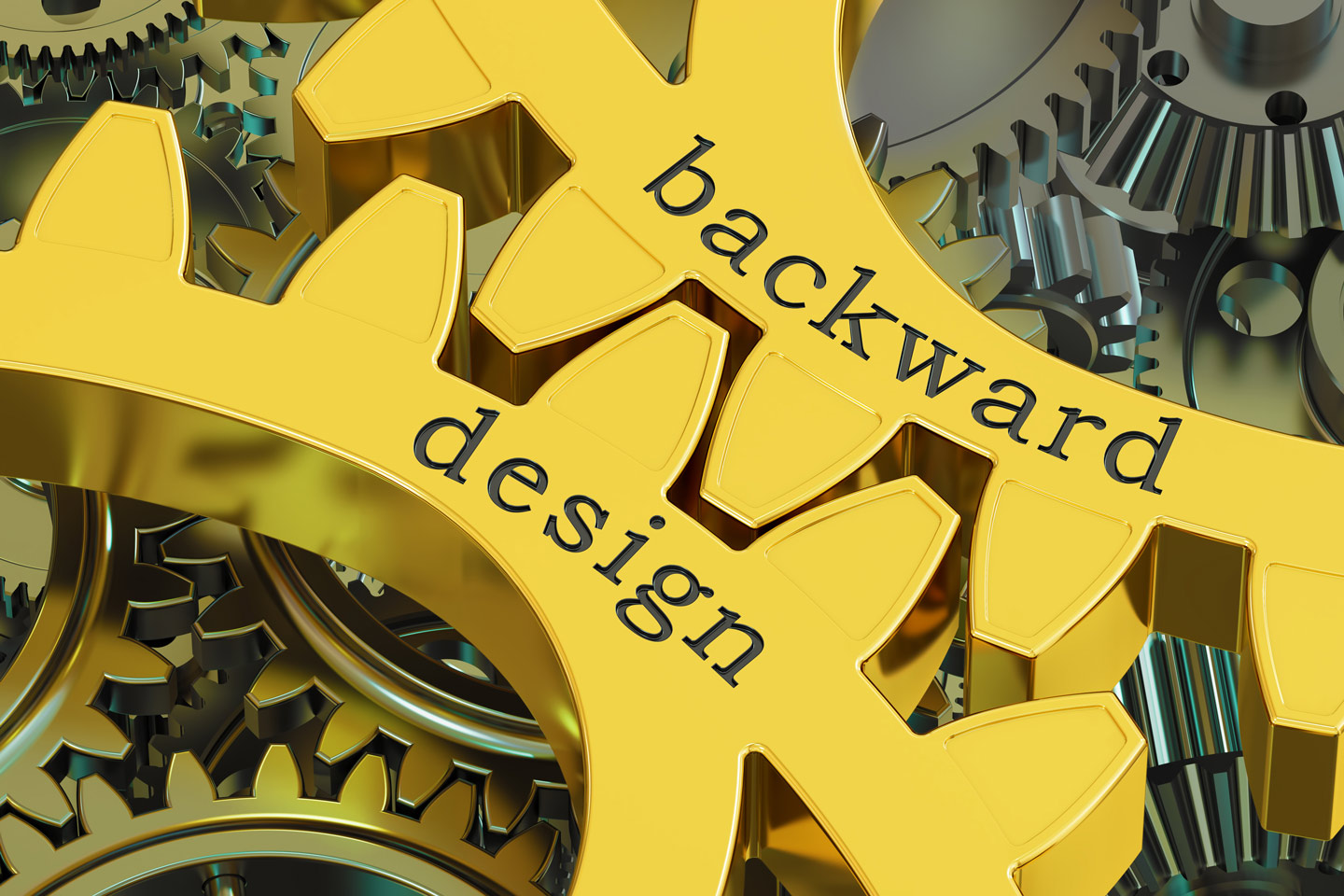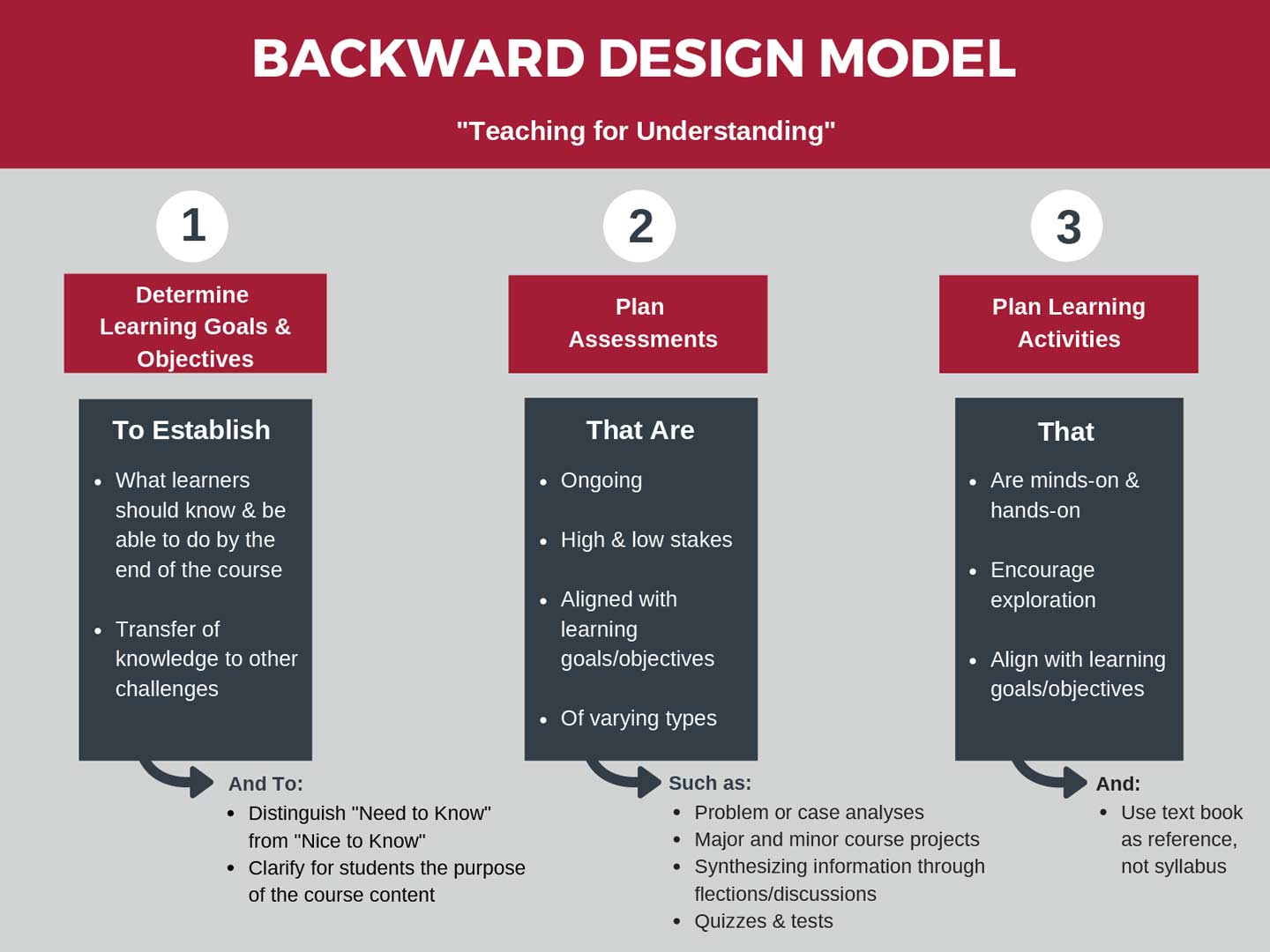Backward Design

The instructional design methodology Backward Design was developed by educators Grant Wiggins and Jay McTighe. With Backward Design, a course’s desired learning objectives are established before any course content is created. This technique ensures that the goals of the courses are met. The Backward Design process consists of three steps:
Step 1
Identify what is it what you want your learners to achieve.
What are the outcomes of the course?
During this step, determine what are the most important points of learning.
Step 2
Step 2
How will the learners demonstrate that they have achieved these outcomes?
What do you believe is acceptable evidence of knowledge?
This evidence can include results from a test, written assignments, presentations and/or projects.
Step 3
Step 3
Determine what materials are needed to support the learning of this evidence.
How will you approach instruction?
Take a few minutes to review the following infographic, which presents the backward design model visually. As you review it, reflect on how this approach can ensure that the path to the expected course learning outcomes is clearly marked, and learners will understand why they are being asked to review specific materials and complete assignments.

Backward Design Model
"Teaching for Understanding"
- Determine Learning Goals & Objectives
- To Establish
- What learners should know & be able to do by the end of the course
- Transfer of knowledge to other challenges
- And To:
- Distinguish "Need to Know" from "Nice to Know"
- Clarify for learners the purpose of the course content
- To Establish
- Plan Assessments
- That Are
- Ongoing
- High & low stakes
- Aligned with learning goals/objectives
- Of varying types
- Such as:
- Problem or case analyses
- Major and minor course projects
- Synthesizing information through reflections/discussions
- Quizzes & tests
- That Are
- Plan Learning Activities
- That
- Are minds-on & hands-on
- Encourage exploration
- Align with learning goals/objectives
- And:
- Use text book as reference, not syllabus
- That
Consider This
When creating a course, use various ways to display information, ensuring your course considers different learning types, according to the UDL principle of multiple means of representation. For additional information and practical suggestions, visit the Representation page on the CAST website.